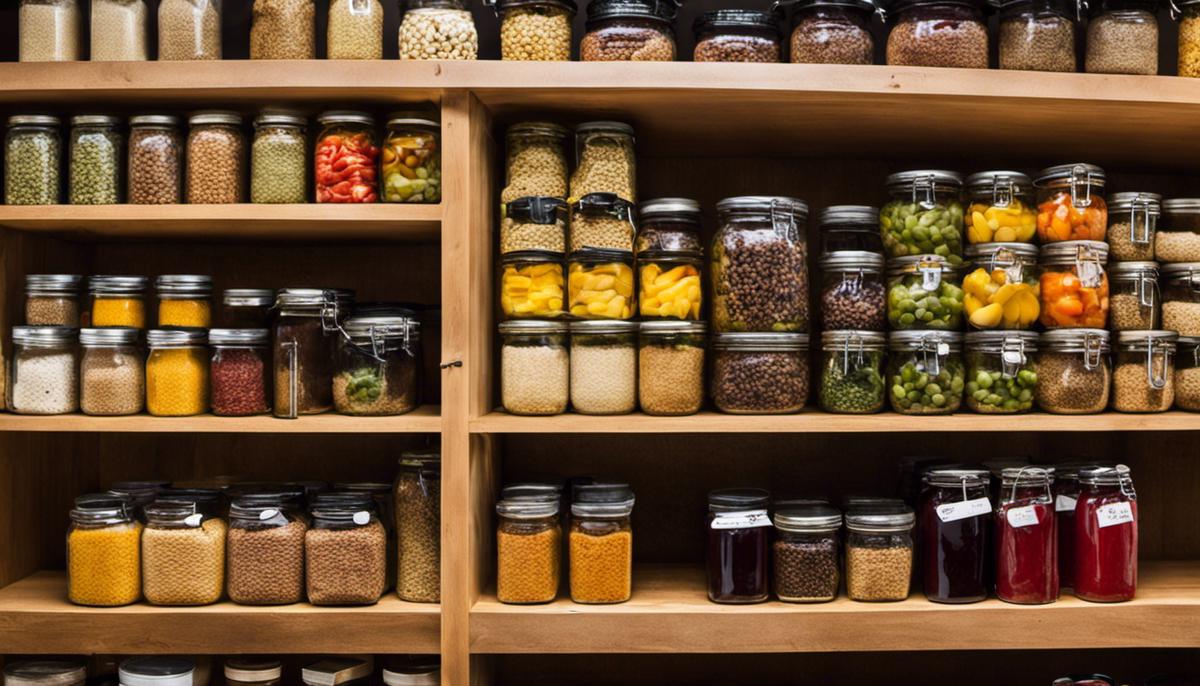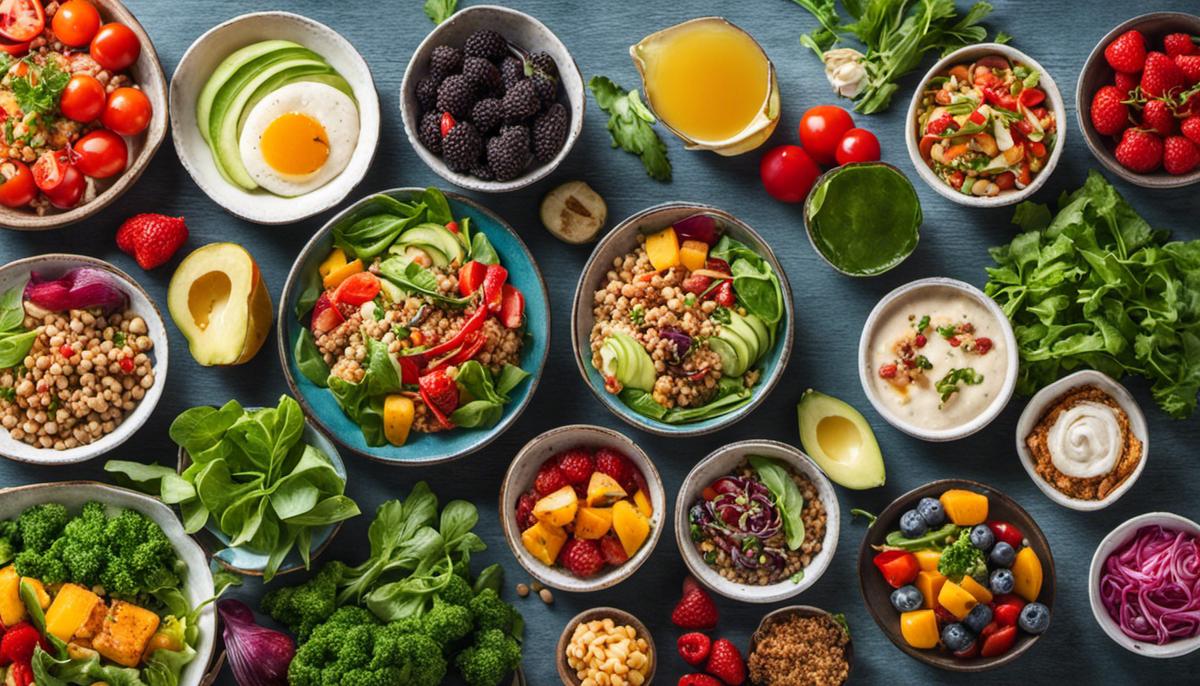In the grand spectrum of culinary arts, there’s a sweet spot where health and flavor cross paths. Imagine enjoying your favorite dishes, abundant in their rich tastes and heartwarming satisfaction while knowing you are nourishing your body with optimum nutrition. The magic lies in comprehensive knowledge – understanding healthy ingredients, introducing them into popular recipes, experimenting with cooking techniques, and mastering the harmony of flavor profiles. With a focus on whole grains, lean proteins, fresh fruits and vegetables, and healthy fats, we delve into a world where you can simultaneously relish food and strive for wellness.
Understanding Healthy Ingredients
At the heart of every food enthusiasts is the excitement and joy in transforming a set of ingredients into a masterpiece of flavors. This journey is both creative and grounding, and it all starts with a well-stocked pantry. Yes, having a wide range of quality cooking staples at your disposal can open up the doors to numerous delicious and healthy dishes. So, what are those usable, timeless, and omnipotent basic ingredients passionate kitchen souls should possess?
Let’s dive right into it.
Firstly, Whole Grains. The famous adage, ‘All is well that begins well,’ fits perfectly in this context as nothing beats a morning started with a hearty bowl of oats. Whole grains like quinoa, barley, brown rice, oats, bulgur, and farro are a must-have on the pantry shelves. They are full/chocked of fiber, protein and make genuinely satisfying, healthy dishes.
Eggs are next! From brightening breakfast spreads to emulsifying salad dressings and creating perfect baked goods, eggs are universal champions in the culinary world. The best part? You probably already have them in your fridge.
Lentils also deserve an honorable mention – being packed with illness-fighting antioxidants, they’re a rich source of plant-based protein, fiber, and vital minerals. They can easily transform into mouthwatering soups, stews or salads, adding weight to every meal.
Now comes the magical world of Spices and Herbs. Salt and black pepper are crucial, yes, but oregano, cumin, turmeric, or chili flakes can also be game-changers. These small powerhouses play a massive role in adding depth and dimension to simple dishes, not to mention their antioxidant properties and other health benefits.
Another essential is extra virgin olive oil; think of it as the heart of healthy and flavorful cooking. Be it sautéing, roasting, dressing salads, or simply dipping bread, the possibilities are endless.
In the adventure of healthy cooking, how can one forget the aromatic beauty of fresh fruits and vegetables? They are the go-to sources of vitamins and minerals, offering an immense range of flavors and textures.
A stocked pantry is incomplete without Nuts and Seeds. Almonds, walnuts, chia seeds, flaxseeds—they’re like bite-sized packages of nutritional goodness. Perfect for sprinkling over salads, mixing into yogurt, or simply snacking on, these mini wonders add crunch, flavor, and health galore.
Indeed, flavorful and nutritious lifestyles emerge from well-stocked kitchens, and these essential ingredients can elevate even the most straightforward dishes to culinary works of art. So, embrace these staples, and let the journey of wholesome, delicious cooking begin. Happy experimenting with flavors!

Incorporating Health into Popular Recipes
Revamping Indulgence: Turning Favorites into Nutritious Wonders
Lovers of food understand this fact: dining is an experience, not just a necessity. For the devoted epicurean, flavor matters, but that doesn’t mean nutrition should play second fiddle. Thankfully, it’s perfectly possible to derive enjoyment from wholesome, nutrient-packed food while preserving the sensation of a sumptuous treat. In fact, healthy food can be as lip-smacking as very indulgent dishes with a few minor and strategic switches. Let’s explore some of them, shall we?
Stroll down the aisles of the supermarket and one staple that is guaranteed to be found is pasta. But white pasta is essentially refined flour, not the best choice for someone who’s health-conscious. Also, it can leave one feeling sluggish, not what you want after a pleasurable meal. Enter whole wheat or even legume-based pasta. They are replete with fiber, minerals and vitamins and are a simple way to impressively boost the nutritional profile of pasta dishes.
Many food lovers swear by the richness that full-fat dairy adds to dishes. Think cheese, cream, butter, they’re all delicious. But they can also contribute to higher levels of unhealthy fats in a meal. A fantastic alternative is using natural Greek yogurt. It’s packed with probiotics, high in protein and lends a creamy richness which can satiate even the most discerning palate.
In the culinary world, it is well-known that the right sauce or dressing can elevate a dish from good to gourmet. However, store-bought versions often contain hidden sugars or unhealthy fats. Why not whip up your own dressing, sauce, or marinade using healthier ingredients? Citrus zest, mustard, vinegar, tomato puree… the options are abundant. They add an explosion of flavors without unnecessary calories or additives.
Another game-changer in the transformation of favorite dishes into something healthier is the use of lean proteins. Switching from traditional meats to leaner alternatives like turkey, chicken, fish, or plant-based sources such as tofu, beans, or tempeh can significantly spruce up the nutrition in a meal. They offer a lean protein punch, adding satiety while reducing unhealthy fats.
And, of course, is there any doubt about the wonders of dark chocolate? Packed with antioxidants and possessing less sugar than its milky counterpart, dark chocolate can be used in many dessert recipes to reduce sugar while keeping the decadence intact.
In essence, being a gourmand doesn’t mean you have to compromise on your health. A few simple swaps make it feasible to enjoy your favorite dishes while keeping well-being at the forefront. The exploration of these substitutes doesn’t just add nutrition, but also new flavors and experiences. After all, part of the joy of being a food lover is in discovery, isn’t it? So, go ahead and experiment confidently! In the realm of the culinary arts, the possibilities are as endless as your taste buds. Delightful, flavorful indulgence and nutrition can indeed share the same plate!

Experiments with Cooking Techniques
Diving further into the techniques culinary enthusiasts can employ to create a healthier outcome, one can’t help but think about the cooking methods themselves. The way one prepares the food plays a pivotal role, and by tweaking these methods slightly, one can extract maximum nutrition retention while maintaining the wonderful flavors.
Steaming, an often under-utilized technique, is making a comeback! By using the steam from boiling water to cook our foods, we limit the need for additional fats and oils, maintaining the crispness and natural colors of our ingredients while preserving their nutrients. The steam-infused foods such as vegetables, lean meats, and fish yield a moist and tender result, unquestionably delightful for both palates and waistlines.
Remember, it’s just as much about preserving the essential nutrients, vitamins, and minerals as it is about creating a delectable meal. Opting for slower, gentler methods like poaching and braising can help achieve this. These methods involve cooking at low temperatures for an extended period – perfect for crafting tender, richly-flavored meats, eggs and vegetables without heading for a butter or oil bottle.
Sautéeing is another nifty trick to have up your sleeve. By investing in a good quality, non-stick frying pan, one can limit the number of fats used. Ensure that your pan is hot before adding your food to seal in the flavors. The swift tenderizing of vegetables in high heat with minimal oil results in dishes that are full of texture, color, and most importantly, nutrients.
Roasting or baking your dishes can also result in a healthier outcome. By allowing your meat and veggies to bake in their own juices, you can preserve natural minerals and vitamins and bring out unique, robust flavors. This method can also limit the need for additional fats, particularly when roasting on racks that allow any excessive fats to drip away.
Grilling, on the one hand, seals in most of the nutrients and eliminates the need for butter or oil. Using herbs and spices for the marinade can help lower sodium intake as well.
In the quest for healthier yet tasty food, even dessert can’t be left out! Opt to make fruit-based desserts, replacing processed sugars with natural sweeteners like honey or ripe fruits. Even better, become audacious and experiment with vegetable-based desserts – beetroot and avocado have made surprise appearances in some chocolate cakes recently!
One must remember, it’s not solely about cutting out what’s considered bad but about accentuating the natural flavors of the ingredients and cherishing the nutritional aspects of the food. It’s about the harmonious symphony between health and taste, about discovering new techniques, and the sense of achievement when your loved ones relish a wholesome, home-cooked meal you’ve skillfully crafted.
The road to healthier cooking doesn’t necessarily mean giving up on your favorite dishes, but constantly iterating and enhancing them to make them nutritionally balanced. It’s all about celebrating the cooking process, joyously exploring new alternatives, and sharing the love of healthy yet delectable culinary creations. Because, at the end of the day, food is love and taking care of that love means ensuring that the food we create not only dazzles the palate, but also nourishes the body and soul.

Harmonizing Flavor Profiles in Healthy Cookery
Stepping into the world of healthful cooking doesn’t mean saying goodbye to flavorful foods. Far from it, being conscious about one’s ingredients opens a gateway to a whole new world of tastes. It’s an adventurous quest filled with various culinary techniques and ingredients that tantalize the taste buds without adding unnecessary fats or sugars.
Fish and shellfish are prime examples of how to merge both health and flavor effortlessly. They have their unique, tantalizing taste, plus they’re an excellent source of protein and omega-3 fatty acids. However, remember that the preparation method matters. Lightly grilling, broiling or baking the fish can effectively preserve the nutrients and bring out the rich flavor. Consider pairing fish with bright herbs and citrus for a zesty kick that’s both delicious and nutritious.
Moving on to the plant kingdom, it’s all about harnessing the power of vegetables in their raw and purest forms. Ever tried jicama, celeriac, or kohlrabi? Well, here’s the chance to embrace the unfamiliar! Once the fear of the unknown is conquered, cooking up a storm with these lesser-known veggies can offer a treat to the taste buds and an infusion of vital vitamins and minerals.
An often overlooked cooking technique is the art of fermentation. Fermentation does not only extend the shelf life of foods but also enhances their nutritional profile and introduces your palate to a symphony of complex flavors. Try incorporating fermented foods like sauerkraut, kimchi, or kombucha into the diet. It’s a paradoxical blend of health and tangy taste – the quintessential foodie’s dream.
While sweeteners are typically seen as the enemy, natural sweeteners like pure maple syrup, honey, or dates can add a dollop of sweetness without the guilt. They harmonize with savory dishes, elevate desserts, and are just the magic touch hot beverages need.
While the flavors are dancing on the tongue, let’s not forget about the crunch! Baked kale or root vegetable chips are great healthier alternatives to the packets of deep-fried, salt-laden varieties. Simple to make, exceptionally crunchy, and packed with essential nutrients – what’s not to love?
Ever wondered how restaurants serve such tender meat? The answer is marinating! A well-marinated chunk of meat is not only tender but also flavorful. Using healthier ingredients like Greek yogurt or citrus juice in the marinade can enhance the meat’s flavor profile without adding many calories.
To sum up, embarking on a healthful eating journey does not mean flavor should take a backseat. It’s about maximizing the taste while making mindful ingredient choices. It’s all about innovation, courage, and a sprinkling of fun in the kitchen. Here’s to healthful AND flavorful cooking!

Healthy cooking is a flavorful journey that embraces colorful ingredients, clever cooking methods, and exciting mix of herbs and spices. It’s about embracing the notion that meals that are good for us can be far from boring; they can be deliciously exciting and incredibly nurturing. It’s not just about exploring low-fat or low-calorie options; it’s about incorporating nutritious value into every meal and striving for a balanced diet. By experimenting, adapting, and embracing these principles, you are invited to embark on a culinary expedition where your kitchen becomes your playground, and every meal contributes to your path to good health and well-being.





